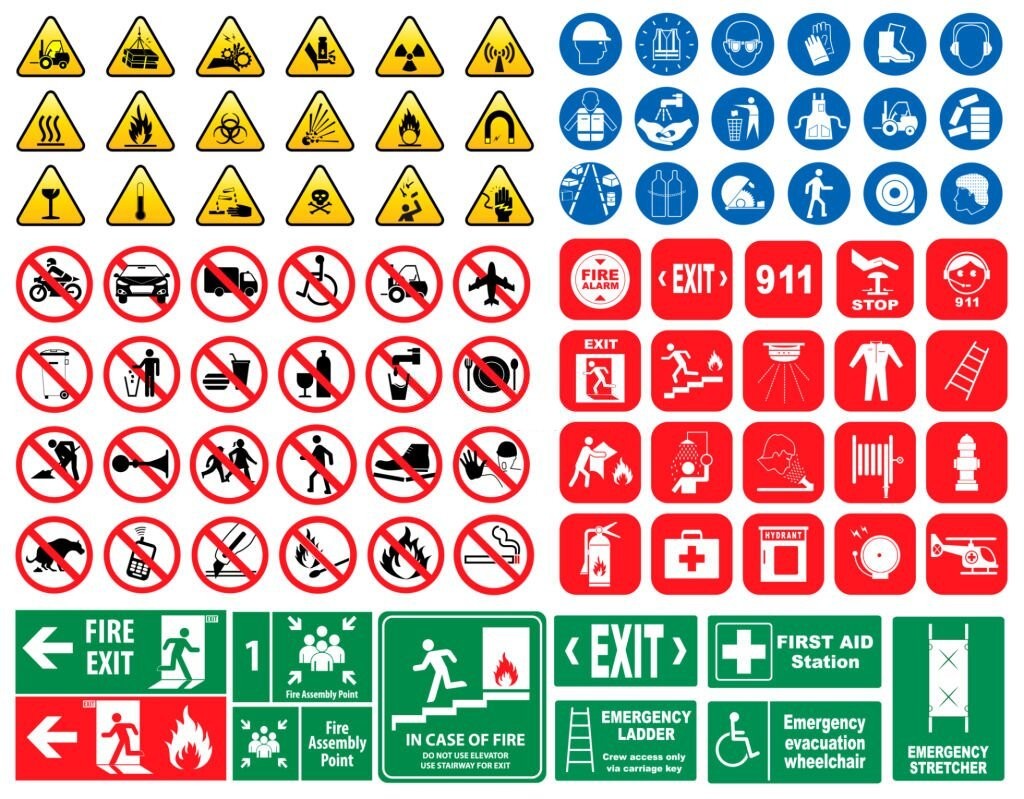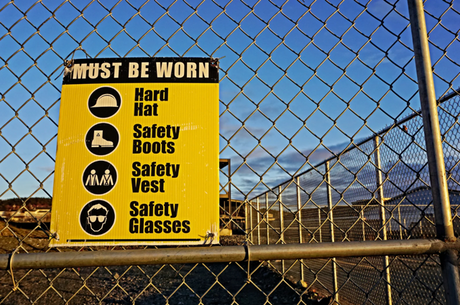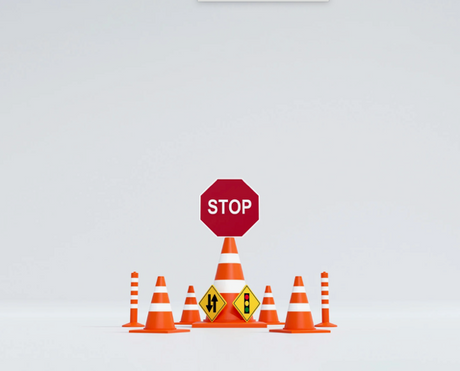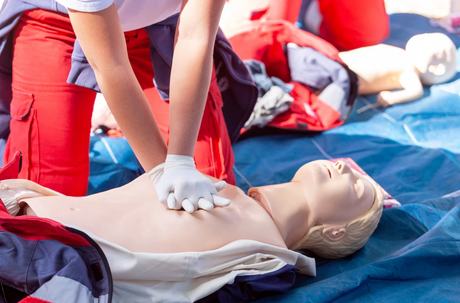Safety signs are a crucial part of maintaining a safe working environment. They provide visual cues that allow people to identify potential hazards and understand safety procedures quickly. There are various types of safety signs that serve different purposes. Here are some of the most important safety signs you should have in your workplace.
Prohibition Signs
Prohibition signs communicate actions or activities that are forbidden. They feature a red circle with a diagonal line across a pictogram depicting the prohibited activity. Prohibition signs are very recognisable globally and instantly convey that an action should not be undertaken. Some common examples include signs prohibiting smoking or open flames. By placing prohibition signs at strategic locations, you can help prevent incidents and injuries that could arise from disallowed behaviours.
Mandatory Signs
Mandatory signs are used to indicate specific actions that workers must take. They have a blue circular background and a white pictogram. Examples include signs mandating the use of protective equipment like hard hats, safety glasses, or ear protection in designated areas. Mandatory signs help ensure safety procedures are always followed by informing people clearly about required behaviours. Not having these signs could lead to non-compliance with important protocols.
Warning Signs
Warning signs draw attention to potential hazards in a location. They have a yellow background and black pictograms or text. Signs with a pictogram of an exclamation mark are used as general warning signs where there is no specific symbol to represent the hazard. Some common examples are signs warning of overhead loads, slippery floors, or electric hazards. By using warning signs, you make staff and visitors aware of dangers they may encounter and the need to exercise caution.
Emergency Signs
Emergency signs provide important safety information in the event of an incident. They have a white pictogram and text on a green background. Key signs include those indicating the locations of first aid kits, eyewash stations, fire extinguishers, fire hoses, and fire exits. Correctly placed emergency signs help people act quickly in an emergency to evacuate safely or access emergency equipment if needed. Not having these signs can lead to confusion and delays in critical situations
Fire Safety Signs
Fire safety signs draw attention to firefighting and protection equipment. They have white text and symbols on a red background. It is crucial to identify the whereabouts of fire extinguishers, fire hoses, fire blankets, and fire exits through clear signage. In the event of a fire, properly placed signs can guide people to these important resources and exits to escape the danger. Fire signs play a life-saving role, and their placement should never be overlooked.
Chemical Warning Signs
If your workplace uses chemicals, it is essential to clearly identify storage and use areas with chemical warning signs. These signs feature a black pictogram of a test tube or beaker within an orange square on a white background. They warn of the presence of hazardous chemicals and advise people to read the accompanying safety data sheet for more information on required safety equipment and handling procedures. Proper labelling of chemical storage cabinets and work areas helps prevent accidental exposure and ensures the safe management of toxic substances.
Biological Hazard Signs
Workplaces dealing with biological risks, like laboratories or medical facilities, need biological hazard signs. Featuring a black trefoil symbol on a yellow background, these signs demarcate areas involving exposure to bacteria, viruses, or other microorganisms. They serve to alert people to the biological risks present and the need to take required precautions, such as wearing personal protective equipment. Correct signage is necessary to protect workers and visitors from exposure to infectious biological agents.
Radiation Warning Signs
Where ionising or non-ionizing radiation sources exist, such as in radiology clinics or research labs, radiation warning signs must be displayed prominently. Consisting of a yellow trefoil on a magenta background, these signs warn of radioactive material or equipment emitting radiation waves. They advise workers to use dosimeters for monitoring exposure and remind others to exercise caution around designated areas. Proper identification of radiation zones through clear signage is crucial to avoid overexposure to hazardous radiation levels.
Safety Colour Signs
In addition to symbol signs, safety colour signs use standardised colours alone to communicate important hazards. For example, signs using the colour red identify fire protection equipment like extinguishers, hoses, and blankets. Yellow signs caution about general hazards or potential risks. Orange signs are used near construction zones to warn of machinery movement or overhead work. Green signs point to emergency exits, first aid stations, and other safety resources. By leveraging distinct safety colours, workplaces can visually convey hazard types even without text or symbols. This makes signage instantly recognisable globally.
In addition to choosing the right types of signs, their visibility and positioning are also important. Safety signs must be large enough to read clearly, illuminated if in low-light areas, and placed in suitable locations where they will be seen easily and have the intended effect. Direction arrows can further aid navigation. Proper safety signage establishes a critical line of visual communication to promote hazard awareness and ensure appropriate responses in various situations. It is a responsible step all workplaces should take to protect workers, visitors and property




